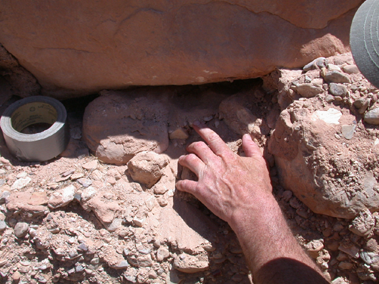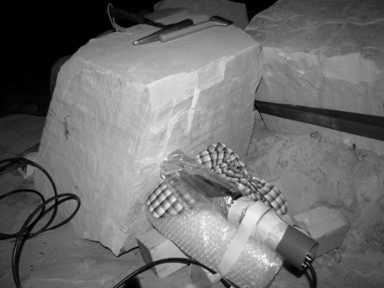Sediment Under Rocks and Underside of Rocks
This requires a specialist on site to ensure proper sampling technique.
The sediment immediately under the placed (or fallen) rock would have been exposed (and bleached) by sunlight just prior to placement/ rock fall.

- Mature lichen growth and bridging between rocks can be a sign that the rock has not been moved since placement (via humans, animals or naturally).
- Be aware of bioturbation after placement of the rock, avoid sampling where vegetation has established and avoid rootlets.
- Dose rate heterogeneity is a fact – overlying rock and sampled/underlying sediment must be sampled and measured separately for background radioactivity.
Generalized sampling protocol includes selectively collecting the grains immediately below the rock in the dark. The underside of the rock will be sampled for the DE and ½ of the DR sample. This will usually require the use of small rock saw/Dremel tool. Sediment below the rock will be collected for the second half of the DR sample after the surface grains are removed.


